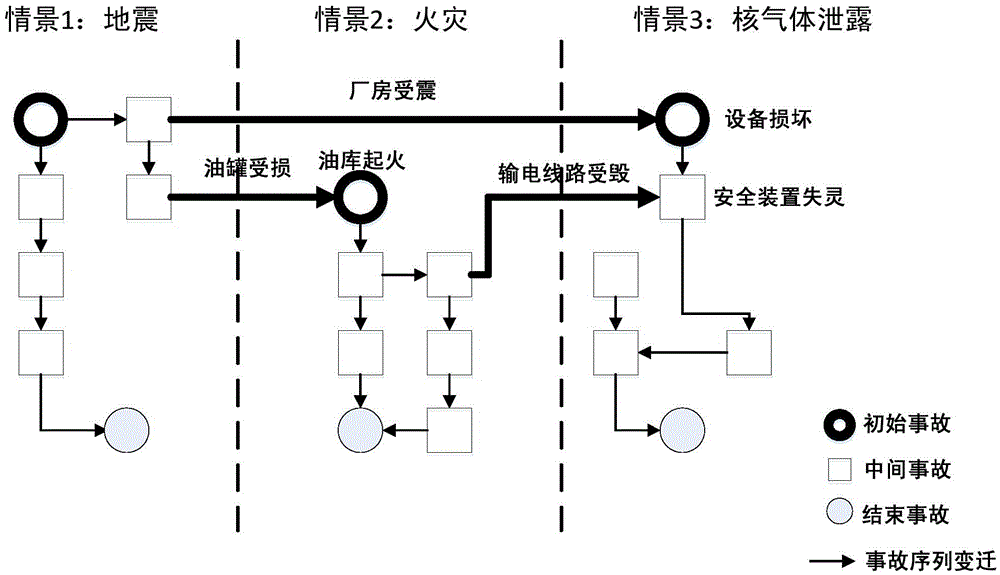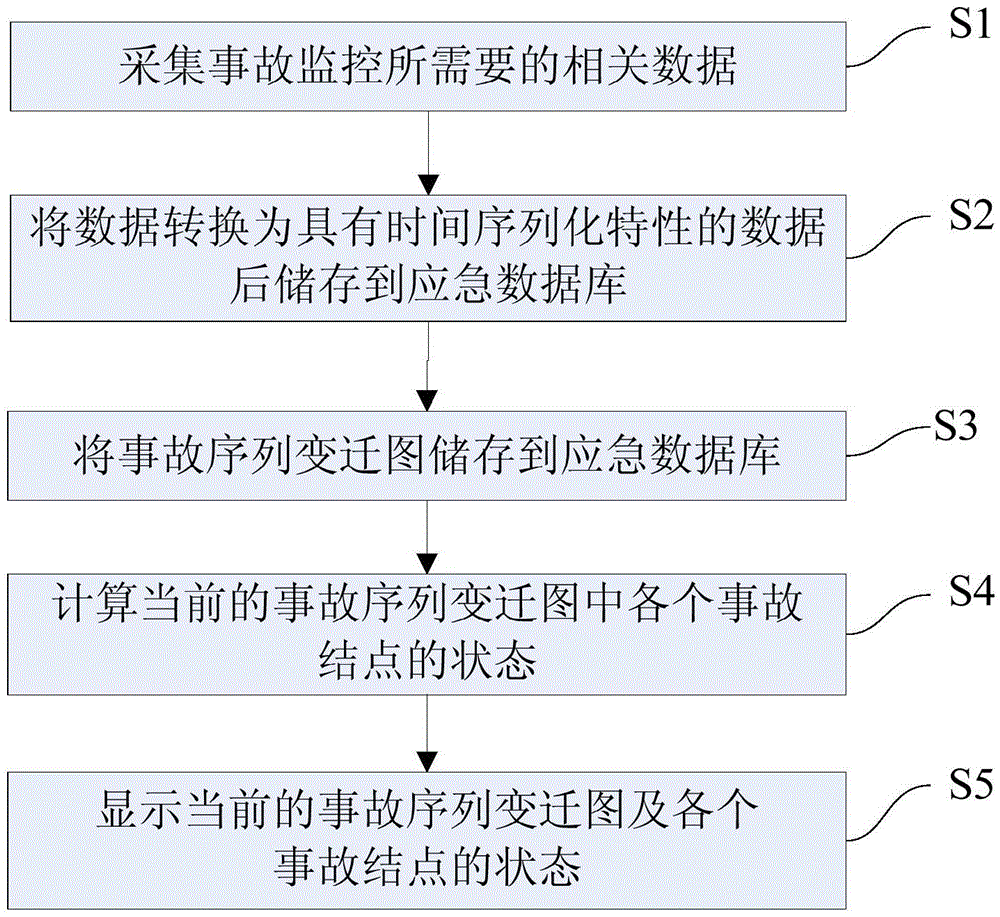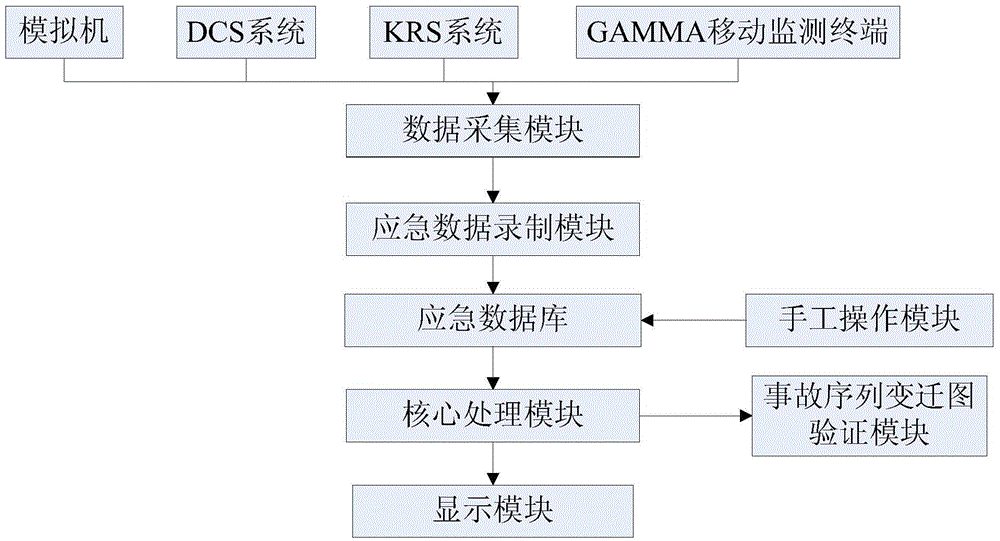Method and system for demonstrating nuclear accident status change in nuclear power plant
A state transition and nuclear accident technology, applied in nuclear power generation, nuclear power plants, nuclear power plant control, etc., can solve problems such as unpredictable accidents and lack of discussion, and achieve the effect of complete accident sequence transition diagrams
- Summary
- Abstract
- Description
- Claims
- Application Information
AI Technical Summary
Problems solved by technology
Method used
Image
Examples
Embodiment 1
[0043] From the relevant theories of safety system engineering, it can be seen that the emergency accident scenario is composed of many accident sequences, and the occurrence of these accident sequences has certain logic rules. Effective use of these rules can achieve the effect of early warning and prevention of accidents. According to the experience accumulated in practical work and the research of experts, it can be established as figure 1 The accident sequence transition diagram shown in the accident sequence transition diagram includes three emergency scenarios, namely earthquake, fire, and nuclear gas leakage, and each emergency scenario corresponds to a scenario column. Each emergency scenario includes an accident sequence, and the accident sequence is composed of several accidents. Since there are certain logical rules among the accidents, that is, there is a "first-after" or "cause-effect" relationship, the accident sequence includes an initial An incident, several in...
Embodiment 2
[0060] The structure of this embodiment is the same as that of Embodiment 1 except for the following features: For some occasions where the relationship between accident nodes is clear and does not change frequently, in order to avoid misoperation by operators and reduce costs and system complexity, the The accident sequence transition diagram is directly engraved on one panel, and each accident node in the accident sequence transition diagram corresponds to an LED light, and the calculated status of each accident node is displayed by the light on / off mode or color characteristics. Since the accident sequence transition diagram has shown the "first-after" or "cause-effect" relationship between accident nodes, the collected data is also data with time-serialization characteristics, so according to the status of each accident node on the current diagram, It is possible to understand the extent of the current accident and predict the accident that will be caused in the next step, ...
Embodiment 3
[0064] This embodiment combines figure 1 The shown accident sequence transition diagram is used to describe in detail a system for displaying nuclear accident state transitions in nuclear power plants of the present invention. For its structure, see image 3 .
[0065] This embodiment shows a system for nuclear accident state transition in a nuclear power plant, including:
[0066] 1. The data collection module is used to collect relevant data required for accident monitoring.
[0067] The data acquisition module is respectively connected with the simulator, DCS system, KRS, GAMMA mobile monitoring terminal, the simulator is used to provide the unit status parameters simulated under the set working conditions, and the DCS system is used to provide the current real The unit data, the KRS system is used to provide the current plant area meteorological data and the meteorological data within a certain period of time recently, and the GAMMA mobile monitoring terminal is used to ...
PUM
 Login to View More
Login to View More Abstract
Description
Claims
Application Information
 Login to View More
Login to View More - R&D
- Intellectual Property
- Life Sciences
- Materials
- Tech Scout
- Unparalleled Data Quality
- Higher Quality Content
- 60% Fewer Hallucinations
Browse by: Latest US Patents, China's latest patents, Technical Efficacy Thesaurus, Application Domain, Technology Topic, Popular Technical Reports.
© 2025 PatSnap. All rights reserved.Legal|Privacy policy|Modern Slavery Act Transparency Statement|Sitemap|About US| Contact US: help@patsnap.com



